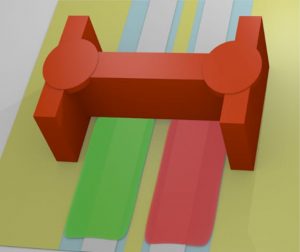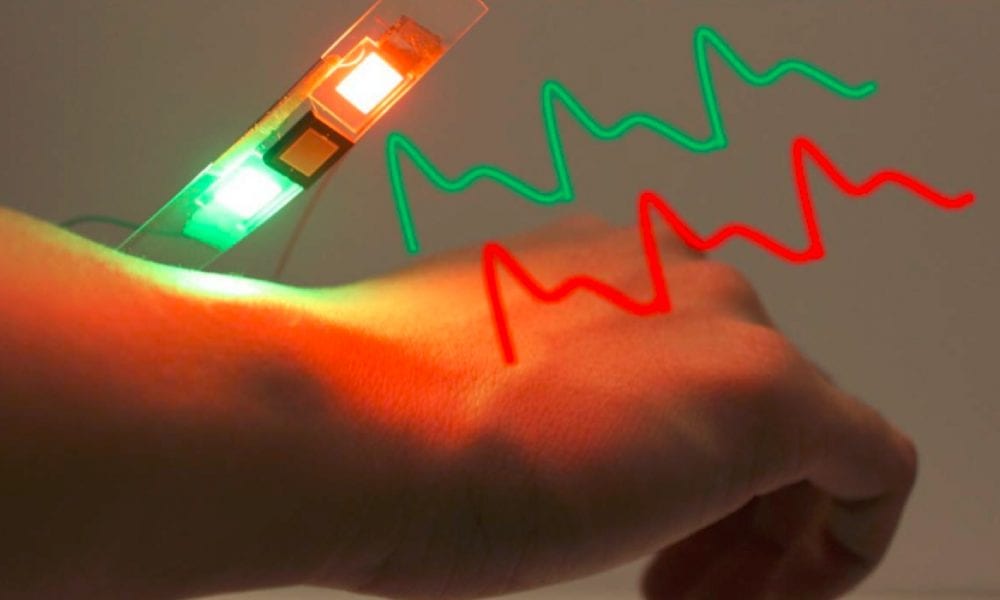 Printed and flexible optoelectronic sensors are used in health monitoring medical devices, as they can conform to the skin, be designed to fit each patient and improve the quality of measured biosignals. In addition, printing technology could lead to high-volume manufacturing, which would allow lower cost and disposable use-cases.
Printed and flexible optoelectronic sensors are used in health monitoring medical devices, as they can conform to the skin, be designed to fit each patient and improve the quality of measured biosignals. In addition, printing technology could lead to high-volume manufacturing, which would allow lower cost and disposable use-cases.
Medical devices that require light sources can, therefore, greatly benefit from the use of printed and flexible polymer light-emitting diodes (PLEDs). Optoelectronic sensing systems benefit from the use of a variety of colors. Multiple wavelengths broaden the extent of applications by allowing for ratiometric measurements. For example, in pulse oximetry, using a single color enables only photoplethysmogram (PPG) measurements, i.e. heart rate measurements. Whereas, two colors – red and green, or red and infrared, enable both heart rate and pulse oxygenation measurements.
Donggeon Han and co-workers now report on a surface energy patterning (SEP) assisted blade coating technique for the fabrication of multicolor PLEDs on one flexible substrate. By selectively creating hydrophilic regions on the substrate, green, red, and near-infrared (NIR) PLEDs are patterned and integrated. A reflection-mode pulse oximeter sensor composed of red and green PLEDs integrated with a silicon photodiode on a flexible substrate is presented. In reflection-mode, the sensor remains on the same side of the skin allowing PPG and pulse oxygenation measurements beyond conventional sensing locations, such as fingertips, toes, or earlobes. Instead measurements can be performed on the wrist and accurate pulse and oxygenation data is obtained. These results show a step towards reliably using PLEDs in medical devices, where the low-cost large-area benefits of PLEDs could be utilized.

















